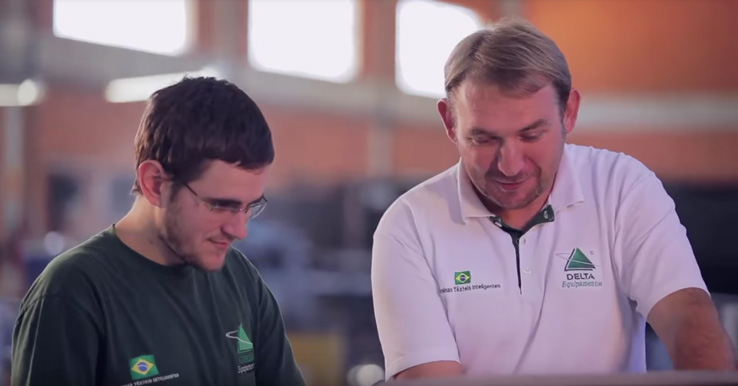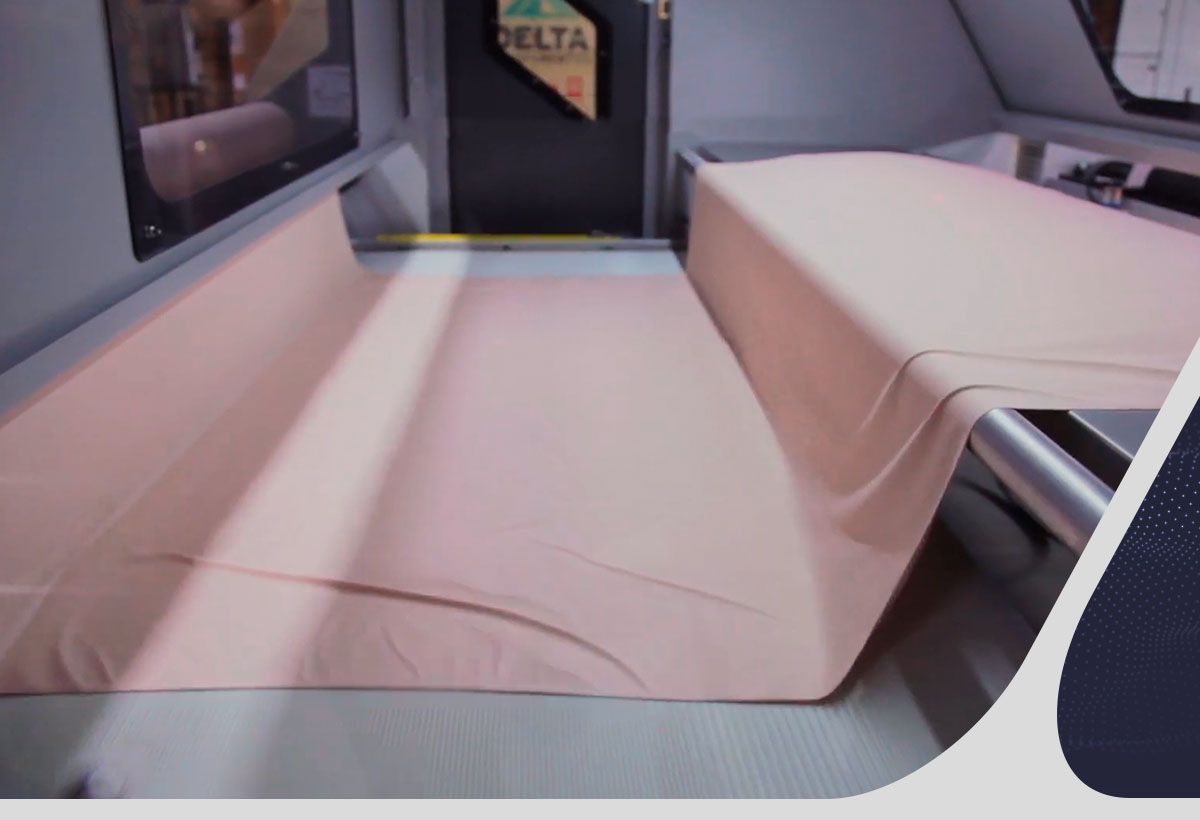The mesh relaxation process is very important to define the width and length of the fabric.
As technology evolves, the relaxation process is improved, which raises some doubts and gives rise to myths related to this process.
In this article we separate 6 of them. Check it out!
All meshes can be relaxed
MYTH
Not all meshes need to be relaxed.
Therefore, before carrying out the procedure, it is important to check the purpose and type of mesh to establish whether or not they should go through the process.
+ Find out more: Mesh Preparation: Who is your cheapest supplier?
It is possible to reduce the rest time of knitwear
TRUE
In the traditional process, knits and elastane fabrics needed to remain open for 24 to 48 hours on nets or tables, before wrapping and cutting took place.
However, thanks to solutions like those made available by Delta technology, this is no longer necessary.
Now, instead of opening the rolls manually and letting them rest, just place them in a Mesh Relaxer.
https://youtube.com/watch?v=_MN_RLX22_Y
It completes the process in much less time, which speeds up the process and avoids wasting productive days. Furthermore, it is no longer necessary to have a place just to let the infested mesh rest.
There is no way to eliminate the process of infesting the diapered mesh
MYTH
It is possible to eliminate the infestation process of diapered fabric using a Mesh and Fabric Shredder, such as the one available from Delta.
This equipment also relaxes from roll to roll and eliminates the need to roll up the diapered mesh after resting. Great functions for those who want to facilitate processes and increase productivity.
It is possible to reduce the variability of the final product
TRUE
The equipment automates the process, collecting information without errors, common in manual procedures.
Therefore, to avoid rework, wasted resources and compromised deliveries, simply train employees to adjust and manage the machinery..

These measures also help to correct processes before failures occur, so that measures are taken and the company’s credibility is not affected.
Using technological solutions for relaxation helps with quality control
TRUE
In addition to avoiding errors and reducing the time it takes to relax knits and fabrics, the RLX300 Knit and Fabric Relaxer also monitors and generates information about the width and length of the material.
With this, the quality of the final part is assured and the automation and standardization of the process manages to generate connectivity and interactivity. It was no coincidence that this equipment was highlighted at Expotextil in Peru!
+ Find out more: What is quality control? How does it work in the textile industry?
The way mesh relaxation is carried out affects the ROI
TRUE
ROI is a calculation made to check the financial result of a given investment. In the case of clothing factories, the ROI result needs to cover the amount spent on purchasing the fabric and generate profits.
The calculation is simple, just subtract the amount invested in purchasing the raw material from the amount acquired by selling the parts manufactured with that raw material.
Then, the result is divided by the value of the initial investment. You can better understand this calculation in another article we wrote on the topic.

You may be asking yourself “But what does this have to do with mesh relaxation?”.
The truth is that all processes that can change the final result of the parts or production time affect ROI.
Therefore, if it takes 48 hours to rest the fabrics, this period that was lost and could be used for production affects the company’s earnings.
Furthermore, if there are flaws that compromise the material during mesh relaxation, the pieces may lose quality and it may be necessary to use more fabric than necessary, directly impacting the quantity of pieces produced by rolls and, consequently, the ROI.
In addition to mesh relaxation, other types of industrial solutions can improve the quality control process. Check out this article about Advanced Manufacturing in the Textile Industry, Quality Control in the Industry 4.0 era, and find out how!

